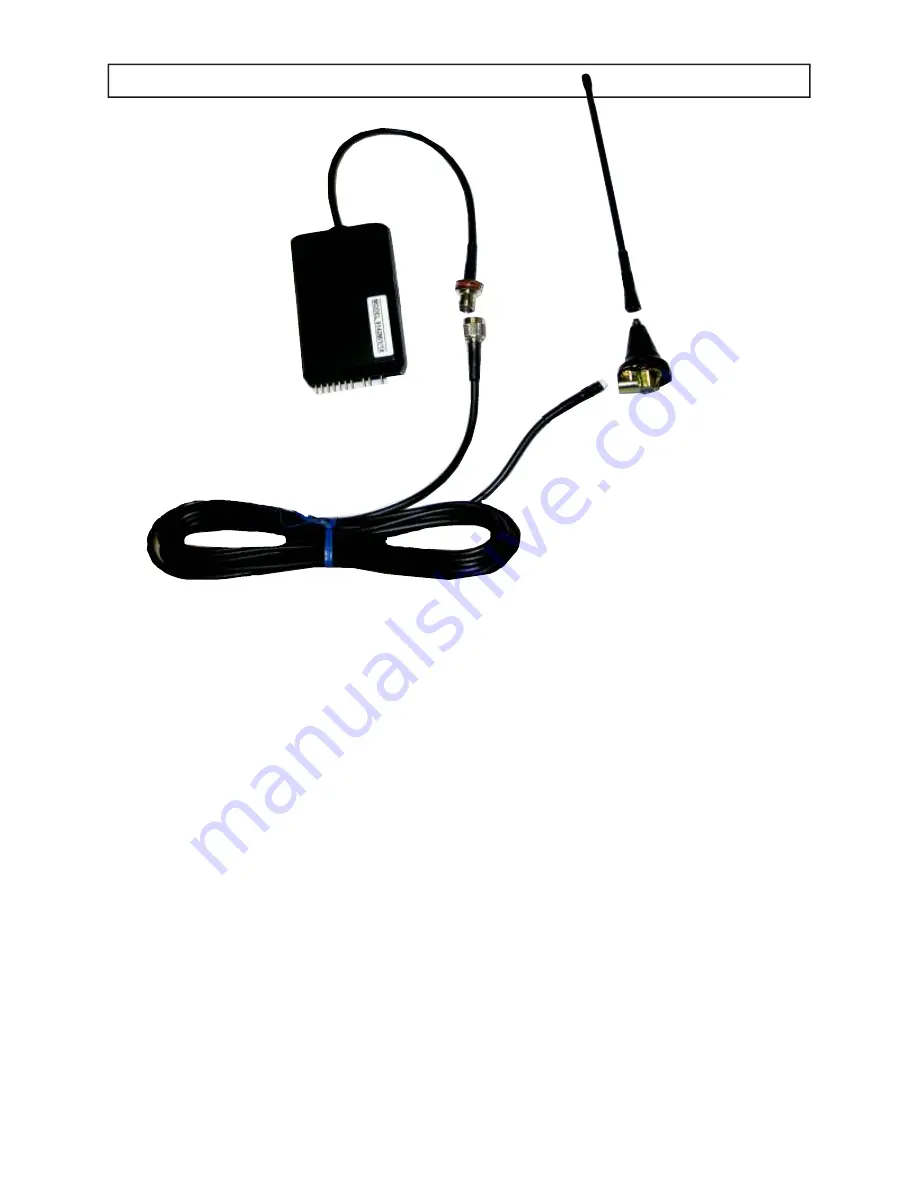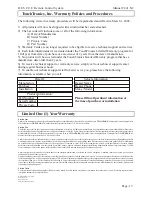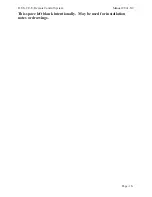
Page -12-
Installation: Antenna
R.E.S.C.U.E. Remote Control System
Manual C841.N2
P/N: ANT.1TCBL
1’ cable w/ TNC Connector
914 Receiver
P/N: ANT.4TCBL
14’ Cable w/TNC Connector
& Nipple Connector for Base
P/N: ANT.MSTFLEX
Flex Whip Antenna
P/N: ANT.BSFLX
Mounting Base
Antenna Installation
1)
Choose location for mounting antenna; on roof of vehicle. Locate the antenna away from other antennas.
Range can be reduced by competing RF signals generated by other RF antennas. To optimize the antenna
range, change location of the antenna and / or re-tune the receiver to adjust for the interference.
2)
Check range before drilling hole for antenna. The range should be 100 - 300 feet with all RF equipment
‘On’.
3)
Drill a 3/4” hole in the roof or trunk. Install antenna base into hole and screw connector onto base and
tighten.
4)
Route coaxial cable from receiver to antenna and install.
5)
Check range again. Call TouchTronics Technical Help Line if there are any problems. See page 2 for
contact information.
Receiver Tuning
1)
Open receiver housing.
2)
Locate the tuning pot (potentiometer) on the printed circuit board. The tuning post is a square silver metal
box with a small hole on the top.
3)
Using a plastic Allen wrench turn the pot 1/4 turn in either direction. Check range after each turn. Stop
when optimum range is reached. The plastic Allen wrenches may be purchased at Radio Shack. They are RF
tuning Allen wrenches. The green Allen wrench in the package is the correct size for tuning the pot.
Range
The range of your remote control will be determined by the location of the vehicle, and electromagnetic
environment of the vehicle (the presence of competing radio signals) as well as the position of the receiving
antenna in the vehicle. Standard range is between 75 feet and 150 feet, under good conditions the range can
exceed 300 feet. A substantial increase in range can be achieved by holding the top edge of the transmitter
against your chin while transmitting. Note: If both transmitters have short range, the problem could be
competing signals from radio transmitters nearby, which will likely be temporary.




































